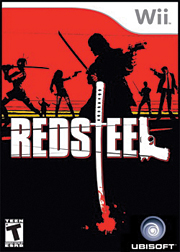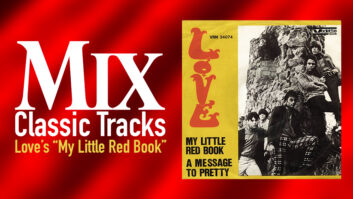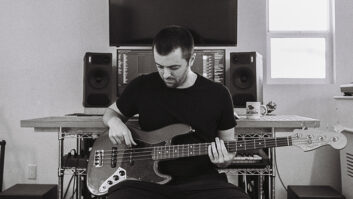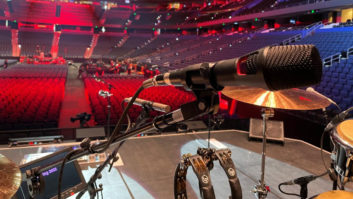
Ubisoft’s Red Steel was one of the first videogames released for Nintendo’s Wii platform. Action surrounds the violent struggle between fictional Japanese crime families, and to embellish the Far East atmosphere, Tom Salta’s score blends electronic instruments with traditional ones, such as the Taiko drums of Japanese group Taikoza.
Salta produced the Taikoza sessions at New York’s Avatar Studios (www.avatarstudios.net) in Studio C, working with longtime friend and Avatar chief engineer Roy Hendrickson. “We’ve done a lot of projects together,” Hendrickson says, “dance remixes, trance records, crossover classical. He gets various kinds of work because he can do most everything.”
Hendrickson, whose history with Avatar goes back to the years when the facility was The Power Station, recorded the drum group to Pro Tools. He says that to a certain extent his studio setup followed the lead of the five members of Taikoza; their method of playing is very performance-centered and the engineer needed to accommodate that. He set up close mics on the instruments where the musicians placed them, and then used rehearsal time to place room mics.

Taikoza performing music for videogame Red Steel.
“It was laid out to how you would see them performing a show,” he says. “It seemed to be most comfortable for them. They have a lot of physical energy when they’re playing, whether they’re sitting or standing or going to different positions. They’re also always changing mallets, which might be anywhere from about 4 feet long to the size of little drumsticks.
“We placed the mics by ear,” Hendrickson continues. “There were four or five room mics. I just walk around the room to find where I thought I would get that little extra low end or a longer decay — some kind of character I liked. While they would be rehearsing the particular pattern they would go for, we just moved things around and listened.

Avatar chief engineer Roy Hendrickson sets up mics for the Taiko drum sessions.
“Those drums are very, very loud, especially the big drum. We had to be very conscious of capturing the ambiences around them — to capture all the low end, these really big wavelengths — and sometimes the room helps enhance those things. I would say maybe 50 percent of the sound is close-miking and the other half is finding key positions in the room.”
Hendrickson used mainly Neumann U87s and KM86s, and Sennheiser 421s. He says he also especially liked KM56s as an overhead pair. The room itself was also a key recording tool. “[Studio C] is not overly huge, but it’s big enough to really be excited by those big drums,” he says. “It’s got a short reverb time, and I don’t want to use the word bright, but it’s alive without being long. It’s got a nice reverb time in the low end, too, which helps enhance those drums and makes them sound a little bit bigger.”
After the drum recording sessions, Hendrickson created a number of premixes in his own studio at Avatar, Studio R, before handing them over to Salta to be incorporated with many other elements in Salta’s Connecticut studio.
Meanwhile, Hendrickson, who has also recorded music for Sega Games such as Sonic the Hedgehog and Daytona Racer, has turned his attention back to more traditional music projects, including sessions with contemporary Christian artist Nicole Mullen and legendary singer Roberta Flack.







